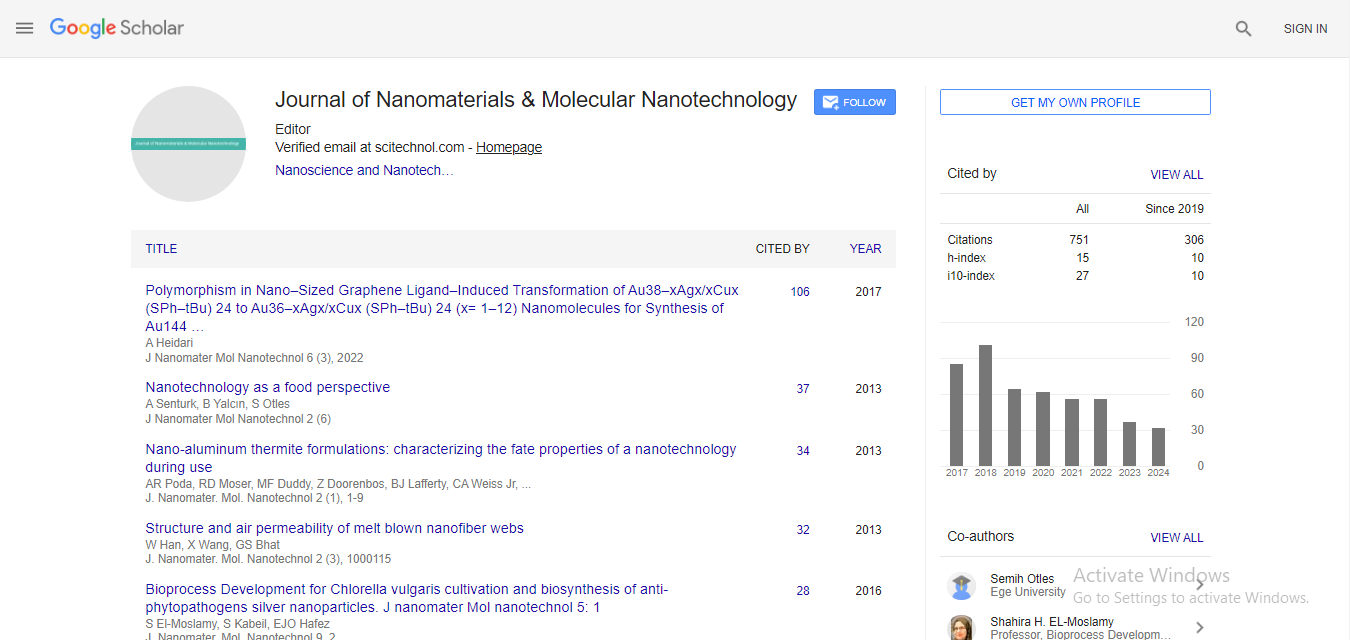Love or hate water?
Liqiu Wang
Department of Mechanical Engineering, the University of Hong Kong, Hong Kong
: J Nanomater Mol Nanotechnol
Abstract
This talk is on three techniques recently developed at HKU that use bioinspired microstructures to precisely manipulate liquids: water collecting, liquid repelling, and droplet capturing/releasing. Unique structural and topological features of spider-silks and their web enable them being a super water collector witnessed by a large number of water droplets handing on them in the early morning. With the microfluidic technology, we have precisely fabricated robust microfibers with spindle cavity-knots and different topological fiber-networks in mimicking these features. These microfibers are endowed with unique surface roughness, mechanical strength, and long-term durability, thus enabling a super performance in collecting water. The maximum water volume collected on a single knot is almost 495 times the knot volume; the water collection is even more efficient and scalable with their networks. These light-weighted yet tough, lowcost microfibers offer promising opportunities for water collection in water-deficient areas. Liquid-repellent surfaces repel liquids instead of allowing droplets to adhere. These surfaces are important in many fields including self-cleaning clothes and kitchenware, enhanced heat transfer, and antifouling, anti-corrosive and drag reduction coatings. The dream of research and development on liquid-repellents is a structure that has robust liquid repellency, strong mechanical stability, and is inexpensive to produce on a commercial scale. However, the functional outcomes of existing liquid-repellent surfaces have not been satisfactory, because of inadequacies of conventional structural design and fabrication approaches in engineering microstructures and properties of such surfaces. We developed a lowcost scalable approach for the fabrication of well-defined porous surfaces with robust liquid repellency and strong mechanical stability. The design of the liquid-repellent surfaces is inspired by structures on springtail cuticles, which can effectively resolve the longstanding conflict between the liquid repellency and the mechanical stability. Springtails are soil-dwelling arthropods whose habitats often experience rain and flooding. As a consequence, springtails have evolved cuticles with strong mechanical durability and robust liquid repellency to resist friction from soil particles and to survive in watery environments. We design the porous surfaces to be composed of interconnected honeycomb-like microcavities with a reentrant profile: the interconnectivity ensures mechanical stability and the re-entrant structure yields robust liquid repellency. The cuticle-like porous surfaces are fabricated by self-assembly using microfluidic droplets, which takes full advantage of the capabilities of microfluidics in terms of scalability and precise-handling of small fluid volumes. The generation of these cuticle-like porous surfaces using microfluidics has led to precise, controllable, scalable, and inexpensive fabrication. Some semiaquatic insects can readily walk on water and climb up menisci slope due to the dense hair mat and retractable claws of complementary wettability on their tarsi. Inspired by this, we created a mechano-regulated surface whose adhesive force to liquid droplets can be simply switched through mechanical regulation. The mechano-regulated surface functions as a “magic hand” that can capture and release multiple tiny droplets precisely in a loss-free manner, and works for both water and oil droplets down to nano-litre scale. These surfaces are relevant and crucial in various high-precision fields such as medical diagnosis and drug discovery where the precise transferring of tiny liquid is a must. Learning from nature paves the way for creating nano/microstructures with unique features to interact with liquids on-demand. Small yet powerful, these structures can manipulate liquids effectively and precisely. With these techniques, water may be gathered directly from the air in deserts, no more laundry may become true, and liquids can be conveniently handled like solids.
Biography
L. Q. “Rick” Wang is currently a professor in the Department of Mechanical Engineering, the University of Hong Kong (HKU). He also serves as the Director and the Chief Scientist for the Laboratory for Nanofluids and Thermal Engineering at the Zhejiang Institute of Research and Innovation (HKU-ZIRI), the University of Hong Kong. Prof. Wang has over 20 years of university experience in transport phenomena, materials, nanotechnology, biotechnology, energy & environment, thermal & power engineering, and mathematics, and 2 years of industry experience in technology and IP development/management/transfer as the Chief Scientist & the Global CTO. In addition to 6 authored scholarly monographs/books, 4 edited scholarly monographs, 8 book chapters, 63 keynote lectures at international conferences and over 120 invited lectures in universities/industries/organizations, Prof. Wang has published 200+ papers in various prestigious Journals, many of which have been widely used by researchers all over the world. Prof. Wang has also filed 30+ patents/software copyrights, and developed, with an international team consisting of about 100 scientists and engineers, a state-of-the-art thermal control system for the Alpha Magnetic Spectrometer (AMS) on the International Space Station (ISS). Wang’s work has been widely featured by local, national and international media, and received recognition through a number of awards, including the 2018 TechConnect Global Innovation Award, the 2018 Silver Medal of the International Exhibition of Inventions of Geneva, the 2017 OSA Innovation Award, and the 2016 First Outstanding Achievement Award of Hangzhou Oversea Scholars.
E-mail: lqwang@hku.hk
 Spanish
Spanish  Chinese
Chinese  Russian
Russian  German
German  French
French  Japanese
Japanese  Portuguese
Portuguese  Hindi
Hindi 



